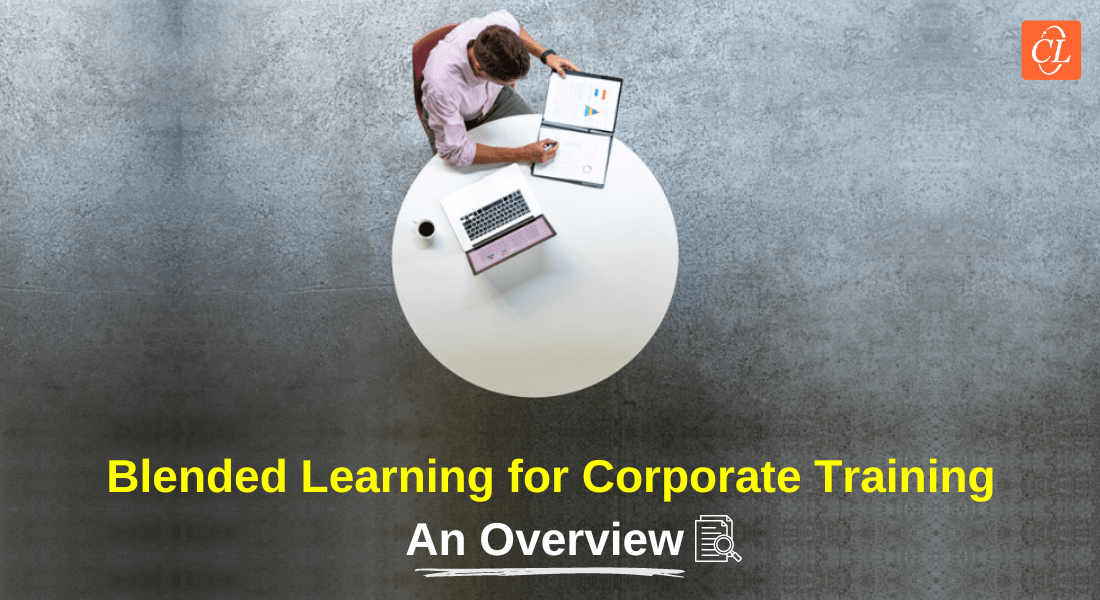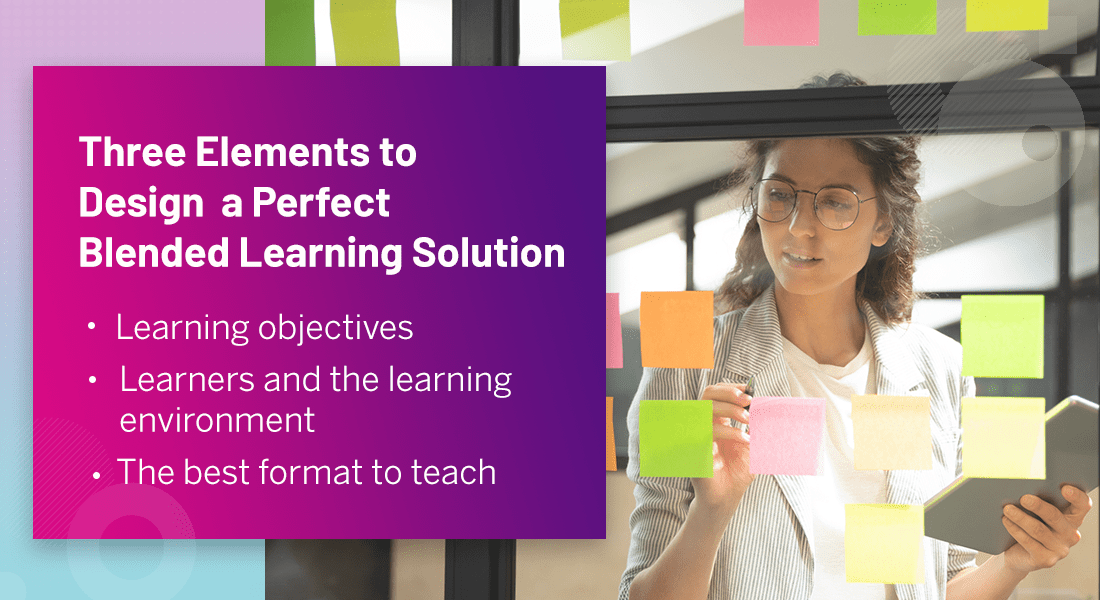How to Perfectly Blend Your Corporate Training Programs

Why is blended learning necessary? As working from home has become more commonplace in today’s society, the traditional lines separating personal and professional life have blurred. Employee training has suffered as a result of this new norm. Given that in-person classes are nearly impossible to attend, do eLearning programs have to be the only option for employee training?
What makes employee training any different when we yearn for variety and a wide range of options in food, fashion, entertainment, and hobbies? How then can we pique learners’ interest in learning once more? Obviously, by combining various training methods. That is the purpose of this blog.
Blended Learning Leverages Multiple Learning Environments
Here are a Few Benefits of Blended Learning:
- Learner Engagement
- Flexible
- Return on Investment
An Overview of Blended Learning
The term “blended learning” refers to a training method that combines digital training with many traditional training techniques, such as team-building exercises, team outings, one-on-one sessions, etc. It is more efficient to provide information to learners in one location rather than through more conventional means. Higher learner engagement, successful outcomes, increased efficiency, cost-effectiveness, and other advantages of blended learning are just a few.
Blended learning gives learners the opportunity to identify their areas of strength and weakness and work on these areas individually to become more productive and efficient workers. To learn about the different approaches used to incorporate blended learning into corporate training, keep reading.
Access this webinar recording that will take you through how “Blended Learning Beats the Forgetting Curve.”
How to Design a Successful Blended Learning Program?
1. Include Assessments
The effectiveness of the learners’ knowledge, skills, and attitude are tracked by assessments used in blended learning, also referred to as eLearning assessments. Another component of the assessment is evaluating learners’ knowledge in light of their learning experiences. You should assess your learner’s progress throughout the course of the program. These evaluations will assist you in identifying training effectiveness.
2. Define the Learning Objectives
It is crucial that you start building your blended learning model with a goal in mind, such as the objective of the training and the desired results. This will help the learners understand what will be covered in the training and what is expected of them. It also enables you to create more specialized courses that will aid the learners in acquiring the necessary knowledge and skills.
Benefits of Blended Learning for Corporate Training
1. Learner Engagement
Online training formats like webinars can be recorded during the live session and can be used for training. If you have access to a learning management system (LMS), interactivities like games, certificates, leaderboards, etc. can increase friendly competition among the learners in the training, which in turn will improve learner engagement.
2. Flexible
While training your employees, it’s crucial to strike a balance and take into account their responsibilities. The flexibility to start training whenever they want and control over their learning and development are two benefits of blended learning, which combines assignments and online training.
3. Return on Investment
Costs associated with in-person training, such as travel, stay, and printed guides, are decreased by blended learning. If you want to train people all over the world, blended learning can make it simple for you to do so because it has the added benefit of allowing you to do so on a larger scale.
Which is the Right Blended LMS
A learning management system is not essential to delivering blended learning, but it makes it easier to manage, deliver, and track your training. Blended learning has every feature that will help you in delivering high-impact training that will help in accelerating the organization’s growth. But how do you choose the right LMS? To ensure an LMS fits a blended learning strategy, let’s look at some features it needs.
1. Interactive Learning Tools
These tools can be used to share learning experiences and knowledge gained from training. Through a forum on their LMS, learners will be able to communicate and learn from each other. Learners can search for more information regarding training in an LMS database. If you’re looking to advance the learning culture in your company, this is the perfect tool.
2. Feedback Tools
The most crucial LMS feature that any company will ever use is feedback. You won’t be able to evaluate the success of the blended learning program without this feature. The feedback reports should include information about the learners’ learning progress, test results, and other relevant data. It’s also helpful to have the option to export reports or plan for them to be delivered to your inbox. Reports not only show what and how your students want to learn, but they can also show how well your blended learning initiatives are performing.
Advantages of Having Webinar Tools with LMS
As a part of the blended learning strategy, your LMS must have the webinar tool. This will allow you to:
- Easily schedule webinar sessions
- Easily register participants through LMS
- Automatically update attendance data in LMS
End Note
Blended learning combines the benefits of both classroom training and online training. It accommodates different learning styles and allows students to use their preferred learning formats. Most importantly, performance-based learning objectives and blended learning must be in alignment in order to close performance gaps for learners.
For more information on how to use blended learning to boost employee performance, check out this eBook “Blended Learning: A Guide to Boost Employee Performance.”





